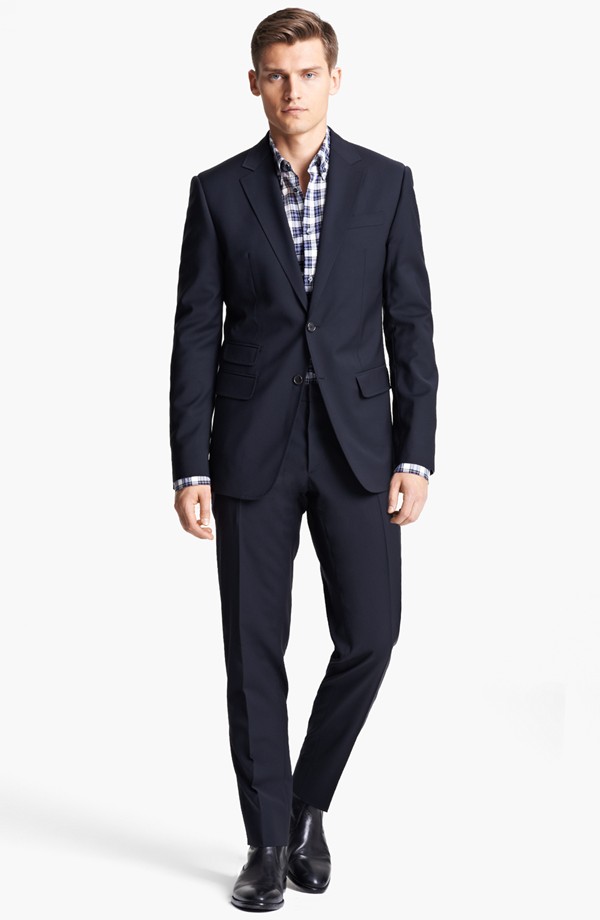 1. Where to shop
1. Where to shop
The first step to finding the perfect suit is to know where to shop. Ask for an in house specialist at a store with a large selection of suits, who is knowledgeable and an expert in suit styles and fit. They will assist you in selecting options that are right for your body type and match what you’re looking for.
2. Make sure the Suit fits
The most significant factor when choosing a suit is fit. You should always have your measurements taken by a professional tailor whenever you’re looking for a suit. It can’t hurt to have some understanding about fit before you go in, so here are a few ways to determine if your suit fits or not. If you are the shorter side, stick with a classic single-breasted jacket. If you are taller, you will want to look for a lower buttoning jacket that will give you a slim silhouette. The suit jacket should hug your shoulders and chest while allowing for motion. There should be no pulling or gaps and should be easy to button. Your shirt cuffs should stay put and not slide up or down. If you decide to wear a button cuff shirt, it should end at your wrist. French cuff shirts should break ½ inch further.
3. Style
The style of your suit is personal preference. You will need to consider the number of buttons, type of lapel, and vent style you want your suit to have.
The three-button suit is very stylish and sleek. This style allows you to button the top two and leave the bottom undone or just button the center. For lapels that lay flat, I recommend fastening the top two buttons. If you lapel has a soft roll, then only fasten the center button.
Two-button suits are more conservative and great for the office. The top button should remain buttoned while the bottom is left undone. This style has become very popular in recent years and looks great on most men and body types.
The one button suit is considered high fashion and very sleek.
You should also consider is what type of lapel you like. A notch lapel is the standard and conservative option, which is sewn to the collar at an angle, creating a step effect. This is standard on single-breasted suits, and is used on most suit jackets and blazers. A peak lapel is elegant and makes more of a statement. It is a V-shaped lapel that points up and out just below the collar. This type of lapel is most commonly seen on double breasted- jackets and formal coats.
Vents are cuts in the back of the jacket that allow for additional movement, and are another factor when looking at the style of a suit. A center vent is conservative and modern, while side vents offer a more European look.
4. Dress for the Occasion
When looking for a suit, you must consider the occasion and how often you’ll be wearing it. A suit that will primarily be worn to the office or out to dinner, is best kept simple. A solid navy or navy with pinstripes is classic and timeless. More formal occasions, such as weddings or funerals, call for black or navy. They are always a sure bet. I always recommend purchasing a suit with a classic style and color before going with a different pattern like pinstripes or checks.
5. Find the perfect suit pant
Suit pants lay differently then your casual trousers. Suit pants should hit at your natural waist and have a cuff at the hem. When heading to the tailor, remember to bring your shoes you plan on wearing with the pants. The height of the shoe will determine the size of the cuff and length of the hem.
